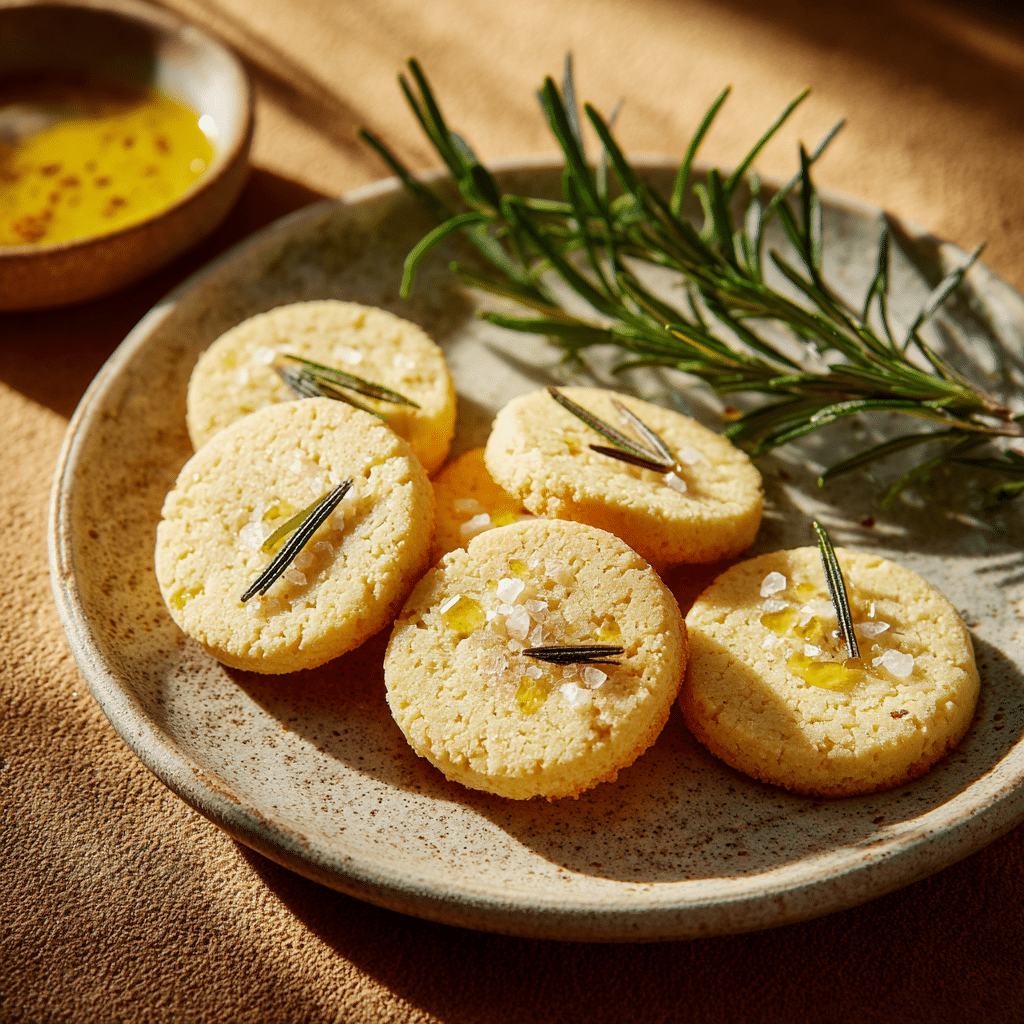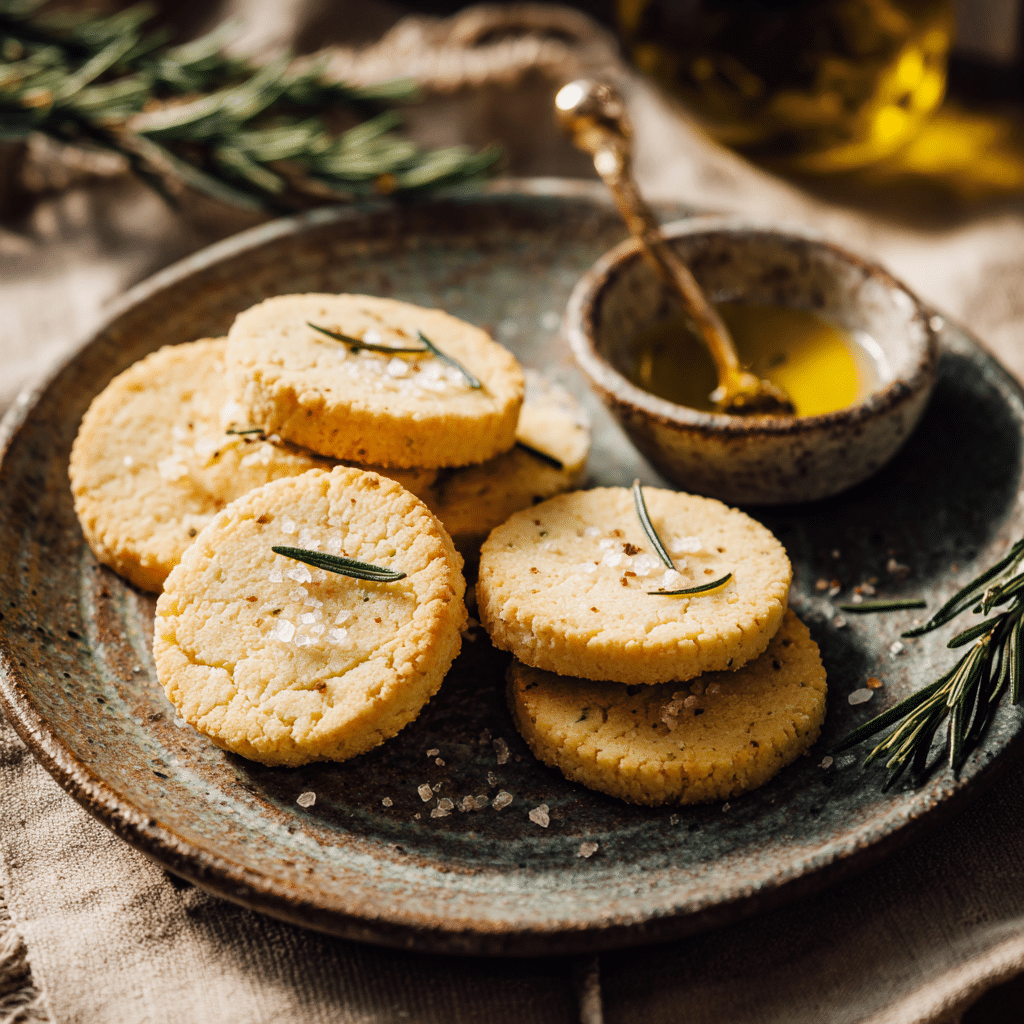Rosemary Olive Oil Shortbread Recipe
If you love the comforting crunch of shortbread with a delightful herbal twist, then you are going to adore this Rosemary Olive Oil Shortbread. It’s a perfect harmony of buttery sweetness and fragrant rosemary, all brought together with the rich silkiness of olive oil. These crisp, aromatic cookies offer such a unique flavor profile that feels both timeless and fresh, making them an ideal treat for afternoon tea, a cozy gathering, or just a simple, satisfying snack you’ll keep coming back to.

Ingredients You’ll Need
Don’t be intimidated by any fancy ingredient list—this Rosemary Olive Oil Shortbread keeps things beautifully simple. Each item plays a key role in shaping the texture, flavor, and that irresistible aroma you’ll fall in love with.
- Flour: The backbone of the shortbread, providing structure and that classic crumbly texture.
- Olive oil: Adds moisture and a subtle fruity richness that melts beautifully into the dough.
- Sugar: Sweetens the cookies just enough without overpowering the savory notes.
- Finely chopped rosemary: Infuses the shortbread with fresh, piney aroma that’s both distinctive and elegant.
- Pinch of salt: Enhances every flavor and balances the sweetness perfectly.
How to Make Rosemary Olive Oil Shortbread
Step 1: Combine the Dry Ingredients
Start by whisking together your flour, salt, and finely chopped rosemary in a large bowl. This ensures the herb is evenly distributed throughout the dough, so every bite bursts with that vibrant flavor. Taking a moment here helps you avoid pockets of rosemary later on.
Step 2: Mix the Olive Oil and Sugar
In a separate bowl, stir together the olive oil and sugar until the mixture looks smooth and slightly glossy. This step is crucial for dissolving the sugar evenly and infusing the oil with sweetness, setting the stage for perfectly tender shortbread.
Step 3: Bring the Dough Together
Gradually add the dry flour mixture into the olive oil and sugar blend. Gently mix until everything just comes together. The dough should be soft but hold its shape well. Avoid overworking it to keep the shortbread tender and crumbly, not tough.
Step 4: Press, Score, and Bake
Press the dough evenly into a parchment-lined pan, smoothing the top with your hands or a spatula. Use a knife to score the dough into squares or rectangles for easy cutting once baked. Bake at 325°F (about 160°C) for 15 minutes until the edges are just turning golden and the scent of rosemary fills your kitchen.
How to Serve Rosemary Olive Oil Shortbread

Garnishes
A light dusting of powdered sugar adds a touch of sweetness and a beautiful visual contrast to the warm herbaceous dough. If you want to deepen the flavor, a few sprigs of fresh rosemary on the serving plate make a lovely garnish and invite the senses in.
Side Dishes
These shortbreads pair wonderfully with a variety of accompaniments. Think a sharp wedge of aged cheddar for a savory bite or a glass of crisp white wine to complement the herbal notes. For a sweeter twist, serve alongside honeyed goat cheese or a fresh fruit compote.
Creative Ways to Present
Try cutting the shortbread into fun shapes before baking for a special occasion, or sandwich two pieces together with a smear of lemon curd or dark chocolate ganache for an irresistible twist. They also make charming homemade gifts stacked in a decorative tin tied with twine.
Make Ahead and Storage
Storing Leftovers
Keep any extra Rosemary Olive Oil Shortbread in an airtight container at room temperature. They stay fresh and crisp for up to a week, making them perfect for planning ahead when you want a quick, homemade treat ready to enjoy.
Freezing
If you want to store them longer, place the cooled shortbread in a freezer-safe container or bag. They freeze beautifully for up to three months. Just be sure to separate layers with parchment paper to prevent sticking.
Reheating
To revive that fresh-baked crispness, warm your shortbread gently in a 300°F oven for about 5 minutes. Avoid microwaving as it softens the texture. This little reheating step brings back the delightful crunch as if they just came out of the oven.
FAQs
Can I use regular butter instead of olive oil?
While traditional shortbread uses butter, olive oil gives this recipe its signature moist and tender crumb with a lovely fruity twist. Using butter will change the texture and flavor, but you can try it if you prefer a richer, more classic shortbread.
How finely should I chop the rosemary?
The rosemary should be chopped very finely to distribute the flavor evenly and avoid overpowering any single bite. If the pieces are too large, they can be a bit tough and overpowering in texture.
Can I substitute the all-purpose flour for gluten-free flour?
Yes, you can substitute gluten-free flour blends, but results may vary. Look for one specifically designed for baking that includes xanthan gum or similar binders to help keep the shortbread tender and crisp.
Is this shortbread sweet or savory?
This Rosemary Olive Oil Shortbread strikes a beautiful balance between sweet and savory. The sugar adds a gentle sweetness while the rosemary and olive oil lend savory and aromatic notes, making it versatile for many occasions.
What is the best way to store the shortbread if I want to keep it crunchy?
Store your baked shortbread in an airtight container at room temperature and avoid refrigeration. This keeps them crisp and prevents moisture from softening the texture, ensuring each bite remains perfectly crunchy.
Final Thoughts
This Rosemary Olive Oil Shortbread is a wonderful way to enjoy a rustic yet refined cookie that feels both comforting and unexpected. Its simplicity is its charm—just a handful of ingredients coming together to create something truly special. Give it a try, and I’m sure it will become one of your beloved go-to treats that you can share with friends and family any time of year.






